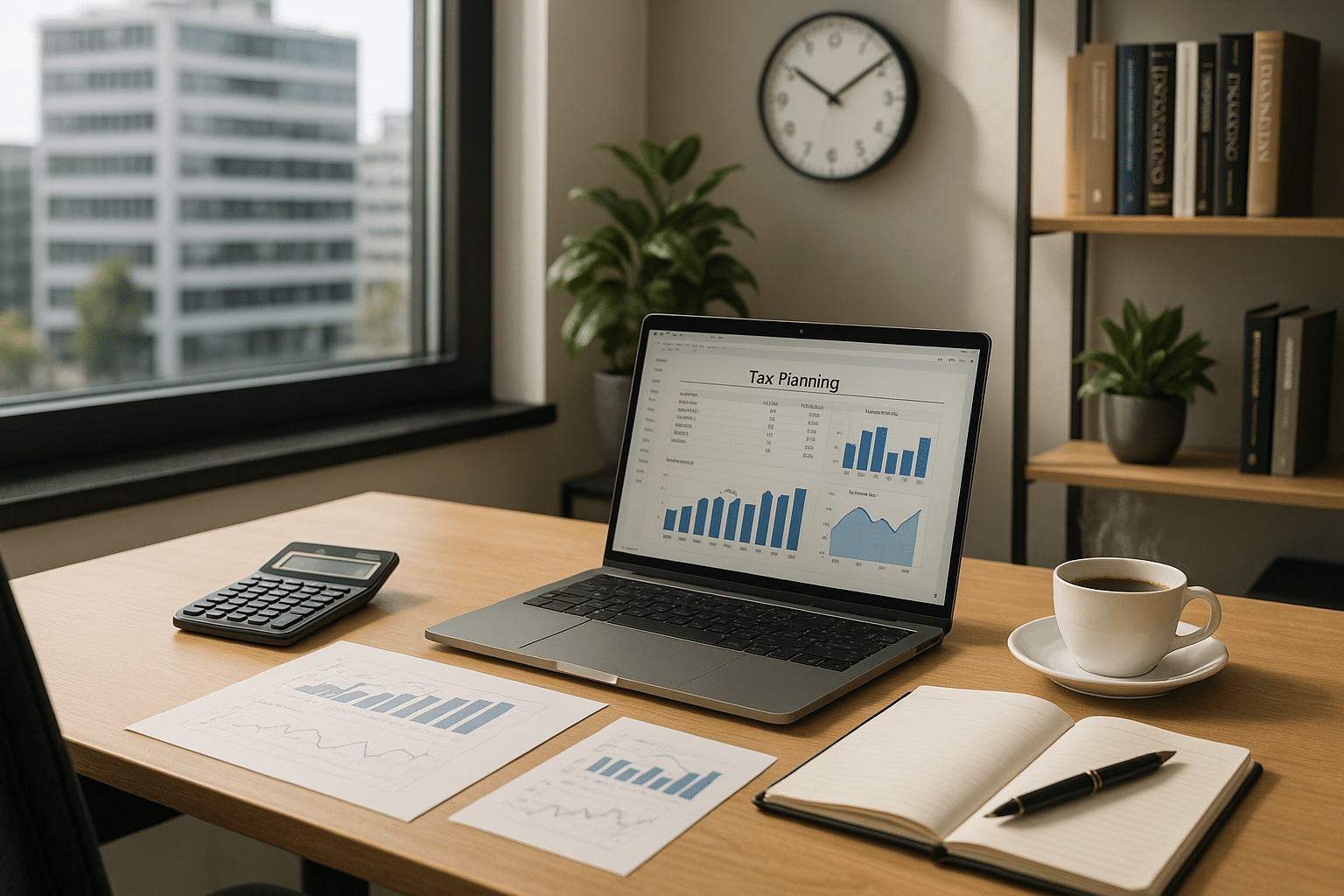😅 But wait, don’t let the impending storm of paperwork dampen your spirits just yet. By strategically planning your business expenses, you could harness the power of tax deductions to your advantage and save significantly on your taxes. This guide will help you navigate the labyrinth of tax laws and regulations to maximize your tax savings and claim the business expenses that could provide maximum benefits.💼💰
Before we delve deeper, it’s important to understand that not all business expenses are created equal when it comes to tax savings. Some can be fully deducted, others only partially, and yet others not at all. As a business owner, knowing the difference could spell the difference between a hefty tax bill and substantial savings.💡
The first section of this guide will break down the concept of business expenses. We’ll explore what they are, the different types, and their impact on your taxes. From here, we’ll journey into the world of deductions and explore how they can be claimed to reduce your tax liability. Don’t worry, we’ll simplify the jargon and present it in a way that’s easy to understand, even if you’re not a tax expert.📚✍️
Next, we’ll discuss the specifics of claiming business expenses, a process often perceived as complex and confusing. We’ll unravel the mysteries, providing a detailed step-by-step guide on how to claim your business expenses efficiently and accurately. With the right information and tools, you can turn this daunting task into a routine procedure.📝👌
Just when you thought we were done, we’ll go one step further to help you get the most out of your tax savings. Our comprehensive guide will provide invaluable insights on planning your business expenses strategically to optimize your tax savings. We’ll look at how to structure your expenses, time them right, and use them to your advantage in ways that are compliant with tax laws and regulations.🔍📈
While we’re on the subject of compliance, we’ll also tackle the issue of audits. We’ll provide you with effective strategies to prepare for potential audits, maintain accurate records, and protect yourself against penalties and fines. As they say, it’s always better to be safe than sorry, especially when it comes to your hard-earned money.💼🔐
Finally, we’ll equip you with resources and tools that can help you manage your business expenses and taxes efficiently. From expense tracking apps to professional tax services, we’ll guide you through the various options available to make your tax journey smoother and more manageable.📊🛠️
While taxes can be intimidating, understanding how to claim your business expenses for maximum benefits can turn your tax season from a period of dread into an opportunity for savings. So buckle up, and get ready for a deep dive into the world of tax savings and business expenses. Let’s maximize those benefits together!💪🚀
Understanding Business Expenses: The Basics
When it comes to running a business, expenses play a crucial role in your financial strategy. From small daily costs to substantial investments, all expenses have an impact on your company’s profit and loss. One of the most critical aspects of managing business expenses is understanding how they affect your tax obligations. To maximize your tax savings, you need to have a comprehensive knowledge of what constitutes a business expense and how you can claim it.
According to the Internal Revenue Service (IRS), business expenses are the costs of carrying on a trade or business. These costs are usually deductible if the business operates to make a profit. This can include anything from office supplies and equipment, rent, employee wages, to advertising and promotional activities.
By correctly tracking and claiming these expenses, you can reduce your taxable income and, therefore, the amount of tax you pay. However, it’s crucial to understand that not all business costs are considered deductible business expenses. Therefore, having a clear understanding of what can and cannot be claimed is key to maximizing your tax savings.
Navigating Deductible Expenses: What Can Be Claimed?
The IRS allows businesses to deduct ‘ordinary’ and ‘necessary’ expenses. An ‘ordinary’ expense is one that is common and accepted in your trade or business, while a ‘necessary’ expense is one that is helpful and appropriate for your business. These can include:
- Cost of goods sold
- Capital Expenses, including business start-up costs, business assets, and improvements
- Personal versus business expenses
- Business use of your home
- Business use of your car
However, it’s worth noting that there are limits and rules on these deductions, so it’s crucial to ensure you’re compliant with IRS guidelines. For example, only 50% of meals can be deducted, and only if they are directly related to or associated with the active conduct of your trade or business.
Another key consideration is that you cannot deduct personal, living, or family expenses unless it is directly related to your business. For example, if you use part of your home for business, you may be able to deduct expenses for the business use of your home. However, it’s essential to maintain clear records that separate your personal and business expenses.
Avoiding Common Mistakes: Best Practices for Claiming Business Expenses
While the benefits of correctly claiming business expenses are significant, there are also risks involved if you make errors in your claims. Common mistakes include not keeping adequate records, claiming non-deductible expenses, and not seeking professional advice when needed. To help you avoid these pitfalls, here are some best practices for claiming business expenses:
- Keep detailed records: The IRS requires you to keep timely and accurate records of your business expenses. It’s crucial to develop a system for organizing and storing receipts, invoices, and other documents that support your claims.
- Understand the rules: As mentioned earlier, not all business costs are deductible. Some expenses must be capitalized rather than deducted, and some must meet specific criteria to be deductible. Be sure to familiarize yourself with IRS guidelines to ensure you’re claiming correctly.
- Seek professional advice: Tax laws and regulations can be complex and challenging to navigate. It’s often beneficial to seek the advice of a tax professional who can guide you through the process and ensure you’re maximizing your deductions while remaining compliant.
To get a more detailed understanding of how to claim business expenses, you can watch the following YouTube video titled “How to Deduct Business Expenses for Maximum Tax Savings” by the channel “Mark J Kohler”. This video provides practical tips and examples that can help you make the most out of your business expenses.
Maximizing Your Tax Savings: A Comparative Analysis
To better understand how claiming business expenses can benefit your company, let’s take a look at the following comparative analysis:
| Scenario | Without Expense Deductions | With Expense Deductions |
|---|---|---|
| Annual Revenue | $500,000 | $500,000 |
| Business Expenses | N/A | $150,000 |
| Taxable Income | $500,000 | $350,000 |
| Tax Owed (20% tax rate) | $100,000 | $70,000 |
As you can see, claiming business expenses significantly reduces your taxable income, resulting in substantial tax savings. It’s also worth noting that the more expenses you can legitimately claim, the more you can reduce your taxable income, and thus, your tax bill. So, take the time to understand and correctly claim your business expenses – your bottom line will thank you!

Conclusion
In the conclusion of this comprehensive article, we have examined the intricate details of Information Technology (IT) and Engineering, two fields that are fundamental pillars of our modern society. We delved into the heart of these subjects, unraveling the complexities and intricacies, and presenting them in a simplified, comprehensible manner. Let’s take a moment to reflect on the key points we have discussed.
The article started with an exploration of the basic concepts in IT and engineering, laying a robust foundation for understanding. This foundation is vital because it forms the bedrock of all the other complex concepts that we have dissected. We also discussed the major areas of overlap between IT and Engineering, the synergies and how they influence each other.👨💻🔧
Furthermore, we looked into the critical role that IT plays in engineering today. This includes data analysis, automation, and modeling among others. We also discussed how IT is utilized in solving complex engineering problems, particularly with the advent of technology like Artificial Intelligence (AI) and Machine Learning. 🤖
We didn’t stop there; we also discussed the role of engineering in IT. This entailed how engineering principles are applied in designing, building and maintaining IT systems. We also touched on how these systems are tested, refined and scaled to meet the ever-increasing demands of the digital age.
Lastly, we emphasized the importance of integrating IT and Engineering, and how this integration is transforming numerous sectors like manufacturing, healthcare, finance, and more. We highlighted the critical role of IT and Engineering professionals in driving this transformation. 💡
Reflecting on all these points, it becomes apparent that the confluence of IT and Engineering is not only inevitable but also vital. The two fields, though distinct in their own rights, have a lot to offer each other. It is through their convergence that we can truly harness the power of technology to solve complex problems and enhance our lives.
We hope that this article has been insightful, and that it has not only deepened your understanding of these fields but also ignited your passion for them. Do you have any thoughts, comments, or questions about the article? Please feel free to share them. We would love to hear from you and engage in a fruitful discussion. 🗣
You’re also encouraged to share this article with your network. This will not only promote knowledge sharing but also stimulate enlightening discussions on the topic. Remember, knowledge shared is knowledge multiplied. 🔗
Finally, do not just stop at reading and understanding. Apply what you have learned in your projects or areas of work. This is the ultimate test of understanding and it’s also how we can collectively make a difference in the world using IT and Engineering. 🌐
For those interested in delving deeper into these subjects, you can visit these active links Computer World and Engineering.com to further your research.
In conclusion, the journey to mastering IT and Engineering is undoubtedly a long one. However, with determination, curiosity, and a love for learning, it is a journey that can be incredibly rewarding. So, let’s embark on this journey together and let’s transform the world with IT and Engineering! 💪🚀
References:
1. Institute of Electrical and Electronics Engineers
2. Association for Computing Machinery
3. International Organization for Standardization
4. IEEE Computer Society
5. American Society of Mechanical Engineers



